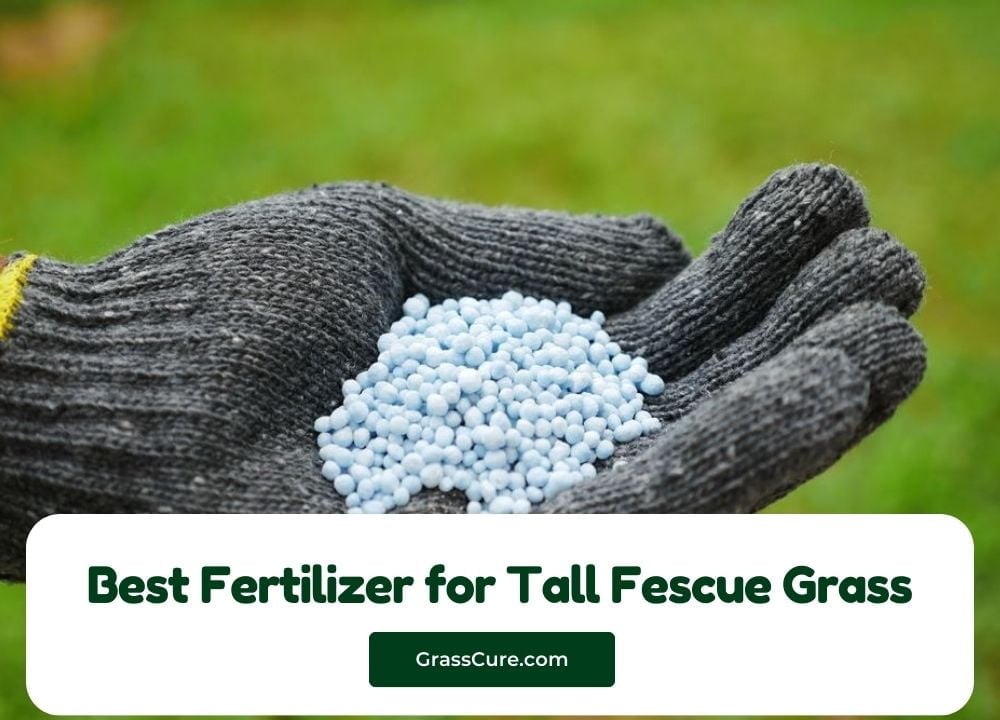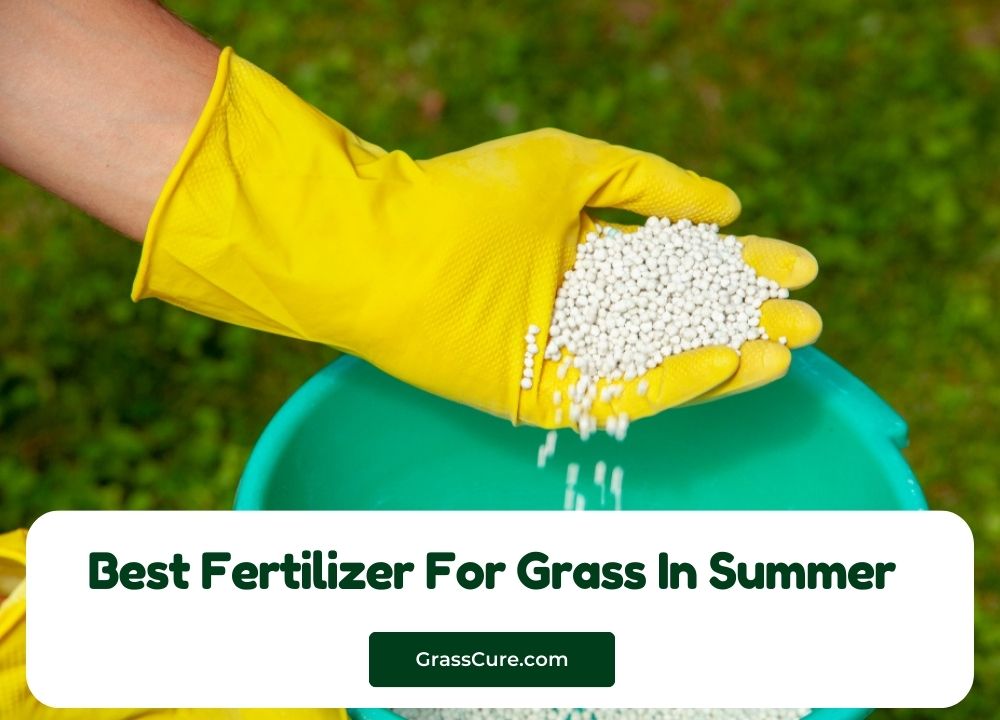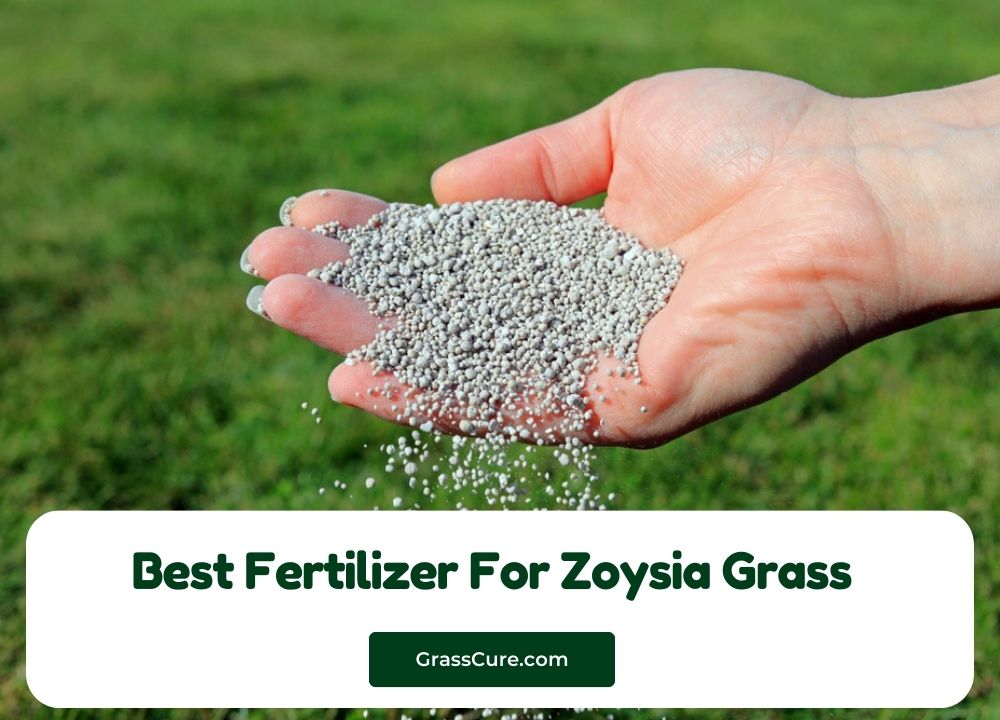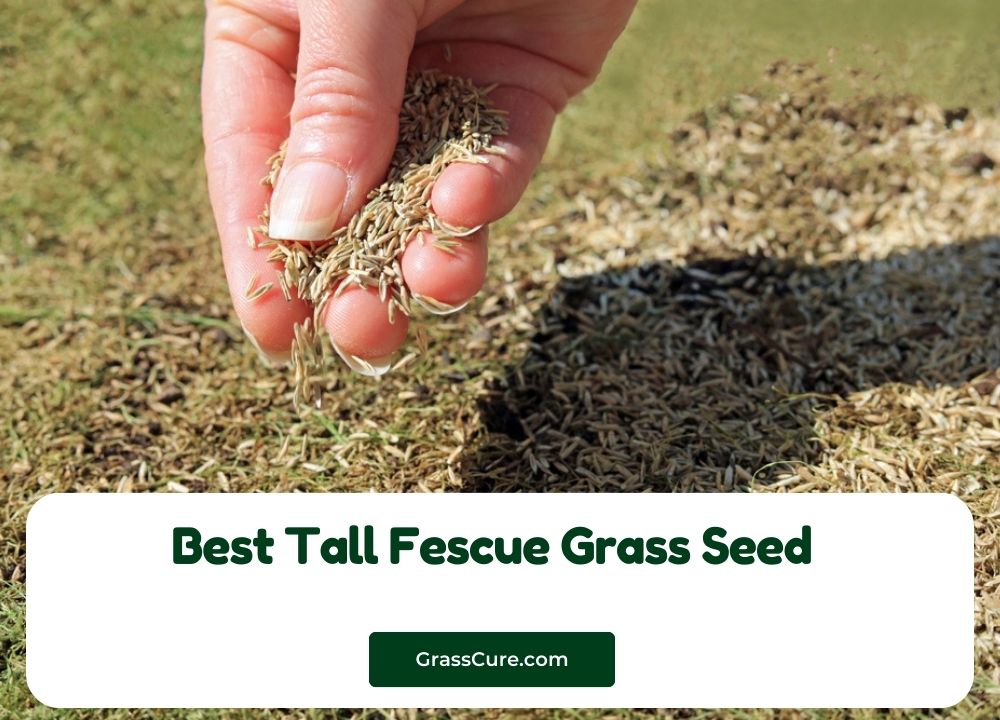Fertilization plays a crucial role in maintaining a healthy and vibrant lawn, particularly for tall fescue grass, which is prized for its drought resistance and adaptability to various climates. Tall fescue is known for its deep root system, coarse texture, and ability to withstand heavy foot traffic, making it a popular choice for residential lawns, parks, and sports fields. However, to thrive, tall fescue requires a balanced supply of essential nutrients. This article aims to provide a comprehensive guide on selecting the best fertilizer for tall fescue grass, highlighting key nutrients, types of fertilizers, application techniques, and top product recommendations to help you achieve a lush, green lawn.
Contents
Understanding Tall Fescue Grass Nutritional Needs
Tall fescue grass thrives best when it receives the appropriate nutrients that support its growth, resilience, and overall health. Understanding its nutritional needs is essential for maintaining a lush, green lawn. Here are the key nutrients tall fescue requires:
Key Nutrients for Growth
- Nitrogen (N)
Nitrogen is vital for promoting lush, green growth and is the primary nutrient needed for leaf development. Tall fescue typically requires a higher nitrogen level, especially during the growing season. Fertilizers with a higher nitrogen content, such as those labeled with a first number of 20 or above in the N-P-K ratio, are ideal for encouraging vigorous growth and maintaining color. - Phosphorus (P)
Phosphorus is essential for root development and overall plant health. It aids in energy transfer within the plant and supports flowering and seed production. While tall fescue needs phosphorus, it generally requires lower levels than nitrogen. Soil testing can help determine if additional phosphorus is needed, especially in new lawns. - Potassium (K)
Potassium plays a crucial role in regulating water uptake and enhancing drought resistance. It strengthens the plant’s ability to withstand environmental stressors, such as heat and foot traffic. Tall fescue benefits from adequate potassium levels to maintain a robust root system and improve overall vigor.
Importance of Soil Testing
Before applying fertilizers, conducting a soil test is recommended to assess the nutrient levels and pH of the soil. Soil testing provides valuable information on existing nutrient deficiencies and helps determine the appropriate type and amount of fertilizer needed. By understanding the soil’s health, homeowners can tailor their fertilization strategy, ensuring that tall fescue receives the right balance of nutrients for optimal growth.
Tall fescue grass has specific nutritional needs, with a focus on nitrogen, phosphorus, and potassium. By recognizing these requirements and conducting soil tests, lawn care enthusiasts can create a targeted fertilization plan that promotes a healthy and thriving lawn.
Types of Fertilizers Suitable for Tall Fescue Grass
Choosing the right fertilizer is crucial for promoting the healthy growth of tall fescue grass. Fertilizers can be broadly categorized into two main types: synthetic and organic. Each type has its advantages, and understanding their differences can help you make an informed choice for your lawn. Here’s an overview of the suitable fertilizers for tall fescue grass:
Synthetic Fertilizers
- Overview and Benefits
Synthetic fertilizers are manufactured chemical compounds designed to deliver concentrated nutrients quickly. They typically have a higher nutrient content and provide immediate results, making them popular among homeowners seeking rapid lawn improvement. - Recommended Products
- Urea-Based Fertilizers: These are high in nitrogen and are ideal for promoting green, leafy growth. Look for products with a high nitrogen-to-phosphorus ratio, such as 30-0-0.
- Balanced Fertilizers: Products like 10-10-10 or 20-20-20 provide a balanced mix of nitrogen, phosphorus, and potassium, suitable for overall lawn health.
- Slow-Release Fertilizers: Formulations like 16-4-8 or coated urea release nutrients gradually, providing a steady supply over time and reducing the risk of nutrient runoff.
Organic Fertilizers
- Overview and Benefits
Organic fertilizers are derived from natural sources, such as plant or animal byproducts. They enhance soil health by improving its structure, increasing microbial activity, and providing nutrients in a more balanced manner over time. While they may have slower immediate effects compared to synthetic options, they are often more environmentally friendly. - Recommended Products
- Composted Manure: Rich in nutrients, composted manure not only provides essential nutrients but also improves soil structure and moisture retention.
- Bone Meal: A phosphorus-rich option, bone meal is great for promoting strong root development, making it especially useful during the establishment of new lawns.
- Fish Emulsion: This organic liquid fertilizer is high in nitrogen and trace minerals, promoting rapid growth and improving the overall health of tall fescue.
Slow-Release vs. Quick-Release Fertilizers
- Pros and Cons of Each Type
- Slow-Release Fertilizers: They provide nutrients gradually over time, reducing the risk of over-fertilization and promoting steady growth. However, they may require more frequent applications during the growing season.
- Quick-Release Fertilizers: These offer immediate results and are useful for rapid green-up, but they can lead to nutrient runoff and require more careful management to avoid burning the grass.
- Best Practices for Application
- Combine both types of fertilizers to achieve a balance between quick green-up and sustained growth.
- Always follow the manufacturer’s recommendations for application rates and timing to ensure optimal results while protecting the health of your lawn.
1. The Andersons Innova Premium Organic Fertilizer
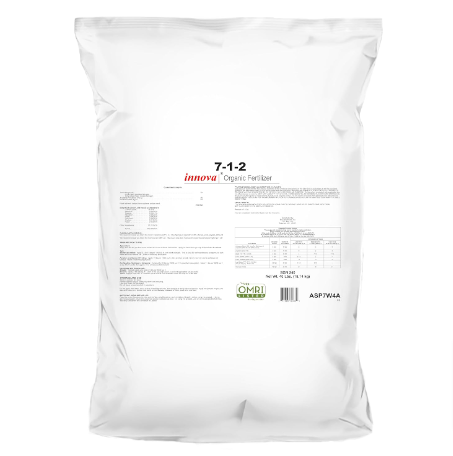
The Andersons 7-1-2 Innova Premium Organic Fertilizer is designed to provide a balanced nutritional profile for various grass types, including tall fescue. With an N-P-K ratio of 7-1-2, this organic fertilizer is formulated to support healthy growth, vibrant color, and overall lawn health.
Key Features
- Organic Composition: Made from natural materials, ensuring safety for children and pets while enhancing soil health.
- Nutrient Ratio: The 7-1-2 N-P-K ratio provides adequate nitrogen for leafy growth, phosphorus for root development, and potassium for drought resistance and stress tolerance.
- Coverage: A 40-pound bag covers up to 5,600 square feet, making it a cost-effective solution for large lawns.
- Slow-Release Formula: Provides nutrients gradually, promoting steady growth and reducing the risk of nutrient runoff.
Benefits
- Safety: Safe for kids and pets, allowing for worry-free application in family areas.
- Enhanced Soil Health: Organic ingredients improve soil structure and promote beneficial microbial activity, contributing to a healthier ecosystem.
- Easy Application: Can be applied with a spreader for even distribution across the lawn.
Pros
- Environmentally friendly and safe for families and pets.
- Provides a balanced nutrient profile that supports overall lawn health.
- Slow-release formula ensures sustained nutrient availability.
Cons
- Higher initial cost compared to synthetic fertilizers.
- May take longer to see results compared to quick-release options.
The Andersons 7-1-2 Innova Premium Organic Fertilizer is an excellent choice for homeowners looking to enhance their tall fescue grass while prioritizing safety and environmental health. Its balanced nutrient profile and organic composition make it suitable for creating a lush, vibrant lawn that is safe for all family members.
2. Scotts Green Max Lawn Food
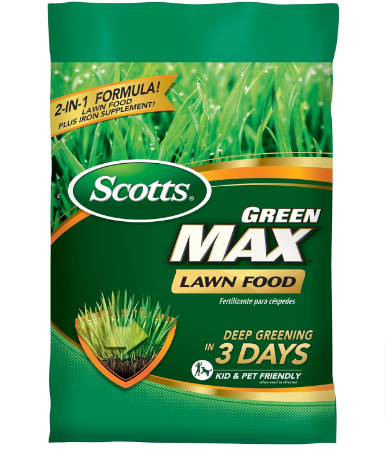
Scotts Green Max Lawn Food is a specialized lawn fertilizer designed to promote vibrant, lush green grass while providing essential nutrients and iron. This product is particularly beneficial for homeowners looking to enhance the color and health of their lawn quickly.
Key Features
- N-P-K Ratio: The fertilizer features a balanced N-P-K ratio that is ideal for promoting healthy grass growth and deep green color.
- Iron Supplement: Contains iron, which helps improve grass color and health by boosting chlorophyll production.
- Coverage: A 16.67-pound bag covers up to 5,000 square feet, making it suitable for medium-sized lawns.
- Quick-Release Formula: Designed for fast results, this fertilizer provides nutrients that are quickly absorbed by the grass.
Benefits
- Enhanced Greening: The combination of nitrogen and iron works synergistically to produce greener grass in a short amount of time.
- Easy Application: Can be applied using a spreader for uniform coverage, making the fertilization process simple and efficient.
- Versatile Use: Suitable for a variety of grass types, including tall fescue, making it a versatile option for many homeowners.
Pros
- Quick results in terms of color improvement and growth.
- Iron supplementation enhances overall lawn health and appearance.
- Easy to apply and covers a substantial area.
Cons
- Quick-release formula may require more frequent applications compared to slow-release fertilizers.
- Some users may find it necessary to monitor for potential over-fertilization, especially in hot weather.
Scotts Green Max Lawn Food is an excellent choice for homeowners seeking to achieve a lush, green lawn quickly. Its combination of nitrogen and iron makes it particularly effective for enhancing the color and health of tall fescue grass. With easy application and rapid results, this fertilizer is ideal for maintaining a beautiful lawn throughout the growing season.
3. Advanced Balanced Lawn Fertilizer Concentrated
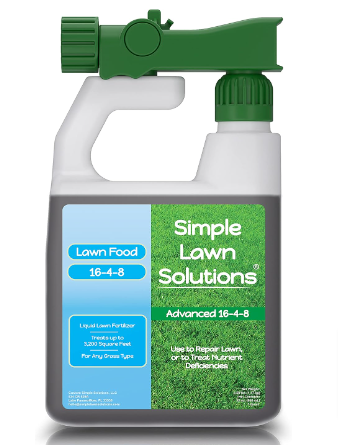
Advanced 16-4-8 Balanced NPK is a quality liquid fertilizer designed to meet the nutritional needs of various grass types, including tall fescue. This concentrated spray formulation is ideal for spring and summer applications, providing essential nutrients for healthy growth and vibrant color.
Key Features
- N-P-K Ratio: With a balanced ratio of 16-4-8, this fertilizer provides a substantial amount of nitrogen for robust growth, phosphorus for strong root development, and potassium for overall health and stress resistance.
- Concentrated Liquid Form: This 32-ounce bottle offers a concentrated solution, making it easy to mix with water and apply.
- Versatile Application: Suitable for all grass types, making it a versatile choice for homeowners with mixed lawns.
Benefits
- Quick Absorption: The liquid formula allows for rapid nutrient uptake, ensuring that the grass receives the necessary nutrients without delay.
- Easy to Use: Comes with simple mixing instructions, allowing for straightforward application with a spray nozzle or garden sprayer.
- Supports Healthy Growth: Ideal for promoting lush, green grass during the critical growing seasons of spring and summer.
Pros
- Fast-acting formulation provides quick results in terms of growth and color enhancement.
- The balanced NPK ratio supports overall lawn health.
- Convenient liquid form simplifies application and reduces the likelihood of uneven distribution.
Cons
- Requires regular application to maintain results, particularly during peak growing seasons.
- Some users may prefer granular fertilizers for longer-lasting effects between applications.
Advanced 16-4-8 Balanced NPK Lawn Food is an excellent option for homeowners looking for a fast-acting liquid fertilizer to enhance their lawn’s health and appearance. Its balanced nutrient profile, ease of application, and suitability for all grass types make it a valuable addition to any lawn care regimen, particularly during the spring and summer months when growth is at its peak.
4. Scotts 26002 10M Tb Nth Triple Action
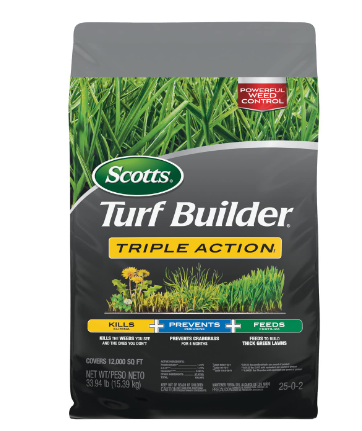
Scotts Turf Builder Triple Action is a comprehensive lawn care solution designed to nourish grass while simultaneously controlling weeds and preventing new ones from sprouting. With its unique formula, this product is ideal for homeowners looking to maintain a healthy and weed-free lawn.
Key Features
- Multi-Action Formula: Combines three key functions: fertilizing, killing existing weeds, and preventing new weed growth, making it an all-in-one lawn care product.
- Coverage: A 50-pound bag covers up to 10,000 square feet, making it suitable for large lawns.
- N-P-K Ratio: Offers a balanced nutrient profile that promotes healthy growth, strong root systems, and vibrant color.
Benefits
- Weed Control: Effectively targets and eliminates common lawn weeds, including dandelions and clover, while preventing new ones from taking root.
- Fertilization: Provides essential nutrients that help grass thrive, encouraging a lush, green appearance.
- Easy Application: Can be applied with a broadcast spreader, ensuring even distribution across the lawn.
Pros
- All-in-one solution saves time and effort by combining fertilization and weed control in one application.
- Covers a large area, making it economical for homeowners with larger lawns.
- Helps maintain a healthy lawn while effectively managing weed populations.
Cons
- May not be suitable for all grass types; it’s essential to check compatibility before application.
- Timing is crucial; applying it during certain weather conditions may affect its efficacy.
Scotts Turf Builder Triple Action is an effective choice for homeowners seeking a comprehensive lawn care solution that addresses fertilization and weed management. With its easy application and extensive coverage, this product helps ensure a lush, healthy lawn while keeping unwanted weeds at bay. Ideal for those looking to simplify their lawn care routine, this fertilizer provides an excellent balance of nourishment and weed control.
5. The Andersons Professional PGF
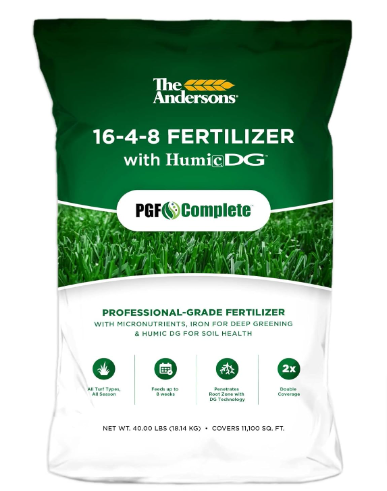
The Andersons Professional PGF Complete 16-4-8 Fertilizer is a high-quality granular fertilizer designed to provide balanced nutrition for various grass types, including tall fescue. Enhanced with humic acid, this product improves soil health and promotes optimal nutrient uptake, making it an excellent choice for maintaining a vibrant lawn.
Key Features
- N-P-K Ratio: The balanced ratio of 16-4-8 ensures an ample supply of nitrogen for green growth, phosphorus for root development, and potassium for overall plant health and resilience.
- Humic Acid Addition: Contains humic acid, which helps improve soil structure, enhances nutrient absorption, and promotes beneficial microbial activity.
- Coverage: A 40-pound bag can cover up to 10,000 square feet, making it suitable for larger lawns.
Benefits
- Enhanced Nutrient Uptake: The inclusion of humic acid facilitates better nutrient absorption by the grass, leading to improved growth and health.
- Soil Health Improvement: Humic acid also aids in building healthier soil, enhancing its ability to retain moisture and nutrients, which is crucial for lawn health.
- Versatile Use: Suitable for various grass types, including tall fescue, making it a versatile choice for different lawn care needs.
Pros
- Promotes healthy, lush green grass while improving soil quality.
- The granular formulation is easy to apply and can be spread evenly using a broadcast spreader.
- Provides long-lasting results, reducing the need for frequent applications.
Cons
- The initial cost may be higher compared to some basic fertilizers, but the benefits often justify the investment.
- Requires watering after application to activate the fertilizer and facilitate nutrient uptake.
The Andersons Professional PGF Complete 16-4-8 Fertilizer with Humic is an excellent option for homeowners looking to achieve a healthy, vibrant lawn. With its balanced nutrient profile and added humic acid, this fertilizer not only nourishes grass effectively but also improves soil health for long-term benefits. Ideal for those committed to maintaining a lush, green lawn, this product supports strong growth and resilience in tall fescue and other grass types.
Factors to Consider When Choosing Fertilizer
Selecting the right fertilizer for tall fescue grass involves several important factors that can influence the health and appearance of your lawn. Here are key considerations to keep in mind:
Soil Type and Condition
- Soil Composition: Understanding whether your soil is sandy, clay, or loamy can help determine the type of fertilizer that will be most effective. Different soil types have varying nutrient retention capabilities.
- Soil pH: The pH level of your soil can affect nutrient availability. Most grasses, including tall fescue, thrive in a pH range of 6.0 to 7.0. Conducting a soil test can guide you in selecting a fertilizer that complements your soil’s pH.
Time of Year and Climate
- Growing Season: Fertilization timing is critical. For tall fescue, applications are typically recommended in early spring and fall, as these are peak growth periods.
- Climate Considerations: Understanding your local climate will help you choose fertilizers that align with seasonal changes, such as temperature fluctuations and moisture levels.
Lawn Maintenance Routine
- Current Fertilization Schedule: Consider how often you currently fertilize and what products you’ve used in the past. This can help you avoid over-fertilization and tailor your new choices accordingly.
- Watering Practices: Some fertilizers require watering in after application, while others may be best applied before rain. Aligning your fertilizer choice with your watering routine can maximize nutrient uptake.
Cost and Availability of Products
- Budget: Consider how much you are willing to spend on fertilizer. Organic options may be more expensive initially but can improve long-term soil health.
- Accessibility: Look for fertilizers available at local garden centers or online retailers. Ensure you choose products that are easy to find and purchase.
Specific Nutrient Needs
- Nutrient Ratios: Understanding the specific nutrient needs of tall fescue can help you choose fertilizers with appropriate N-P-K ratios. A fertilizer higher in nitrogen will promote leafy growth, while one with balanced ratios may support overall health.
- Additional Ingredients: Some fertilizers include beneficial additives, such as humic acid or iron, which can enhance nutrient absorption and improve grass color.
Application Techniques
Applying fertilizer correctly is essential for achieving optimal results in maintaining a healthy tall fescue lawn. Here are some effective application techniques to consider:
Timing of Application
- Spring and Fall Applications: The best times to fertilize tall fescue are during its active growing seasons, typically in early spring and fall. This ensures that the grass can effectively utilize the nutrients.
- Avoid Extreme Weather: Do not apply fertilizer during extreme heat, drought, or heavy rain, as these conditions can hinder nutrient absorption and lead to runoff.
Application Methods
- Broadcast Spreaders
- How to Use: Fill the spreader with the appropriate fertilizer and set the spreader to the recommended setting based on the product label. Walk at a steady pace while applying, ensuring even coverage.
- Advantages: This method allows for uniform distribution, reducing the risk of over-fertilizing certain areas.
- Drop Spreaders
- How to Use: Similar to broadcast spreaders, drop spreaders apply fertilizer directly below the spreader, which allows for precise control of the application area.
- Advantages: Ideal for smaller or irregularly shaped lawns, drop spreaders minimize the risk of fertilizer overspill onto sidewalks or flower beds.
- Liquid Fertilizer Spray
- How to Use: Dilute the liquid fertilizer according to the manufacturer’s instructions and apply it using a garden sprayer or hose-end applicator.
- Advantages: Liquid fertilizers can be absorbed quickly by the grass and are effective for rapid greening.
Best Practices for Application
- Calibrate Equipment: Before applying fertilizer, calibrate your spreader to ensure accurate application rates. Follow the manufacturer’s guidelines for calibration.
- Overlap Passes: When using a spreader, overlap each pass by about 50% to ensure complete coverage and to avoid missed spots.
- Watering After Application: Water the lawn lightly after applying granular fertilizers to help activate the nutrients and promote absorption. Avoid heavy watering that could lead to runoff.
- Avoid Spills and Drift: Be mindful of sidewalks, driveways, and flower beds when applying fertilizer to prevent unintended spills and chemical drift.
Safety Precautions
- Wear Protective Gear: Use gloves and a mask if necessary, especially when handling powdered or concentrated fertilizers, to avoid skin or respiratory irritation.
- Keep Children and Pets Away: Ensure that children and pets are kept off the lawn during and after application until the product has been adequately watered in and absorbed.
Conclusion
Choosing the right fertilizer for tall fescue grass is essential for cultivating a lush, healthy lawn. Understanding the specific nutritional needs of tall fescue, as well as the various types of fertilizers available, empowers homeowners to make informed decisions that support robust growth and resilience.
Key factors such as soil type, climate, and existing lawn care practices should be carefully considered when selecting a fertilizer. By employing effective application techniques—such as using the appropriate spreader, timing applications correctly, and following best practices—homeowners can maximize nutrient uptake and minimize waste.
Moreover, paying attention to safety precautions ensures that both the lawn and the environment remain protected during the fertilization process.
In conclusion, with the right knowledge and approach, you can create a vibrant and thriving tall fescue lawn that enhances the beauty of your outdoor space and provides a comfortable area for family and pets to enjoy. Regular care, tailored fertilization, and diligent maintenance will lead to long-term success and satisfaction in lawn care.
References
- Beard, J. B. (1973). Turf Management for Golf Courses. New York: John Wiley & Sons.
- A foundational resource on turfgrass management, including fertilization techniques and nutrient requirements for various grass types.
- Riley, R. (2015). Understanding Soil Health: The Key to a Thriving Lawn. Penn State Extension.
- This publication provides insights into soil health and its impact on grass growth, emphasizing the importance of soil testing and nutrient management.
- University of Maryland Extension (2021). Lawn Fertilization: When and How to Apply Fertilizer.
- This article outlines best practices for lawn fertilization, including timing, application methods, and safety precautions.
- Scott’s Lawn Care (2023). Choosing the Right Fertilizer for Your Lawn.
- A consumer guide that discusses different types of fertilizers, their benefits, and how to choose the best option based on lawn conditions.
- The Andersons (2023). Nutrient Management for Turfgrass.
- This resource provides an overview of nutrient management strategies specifically for turfgrass, with a focus on balancing soil nutrients for optimal grass health.
- Cornell University Cooperative Extension (2017). Fertilizing the Lawn: A Guide to Organic and Synthetic Options.
- This publication compares organic and synthetic fertilizers, offering guidance on their application and benefits for lawn care.
- USDA Natural Resources Conservation Service (2020). Soil Quality Indicators: Nutrient Management.
- A comprehensive guide that emphasizes the importance of nutrient management in maintaining soil quality and promoting healthy plant growth.
- Griffiths, G. (2018). The Complete Guide to Lawn Care: From Fertilization to Maintenance.
- A detailed resource covering all aspects of lawn care, including fertilization methods, types of fertilizers, and seasonal lawn care practices.
